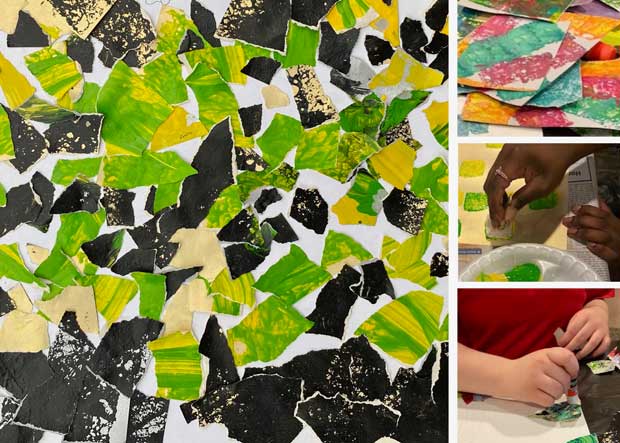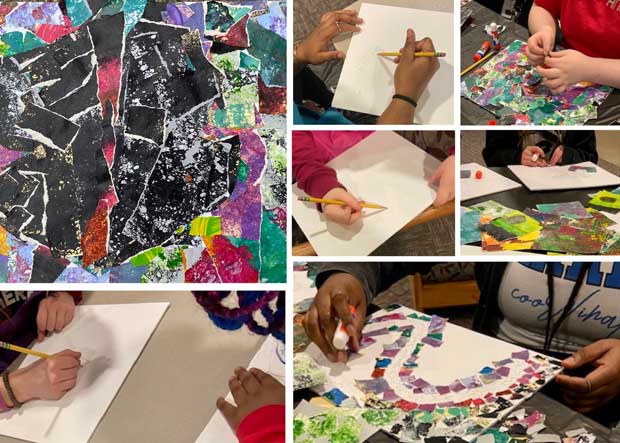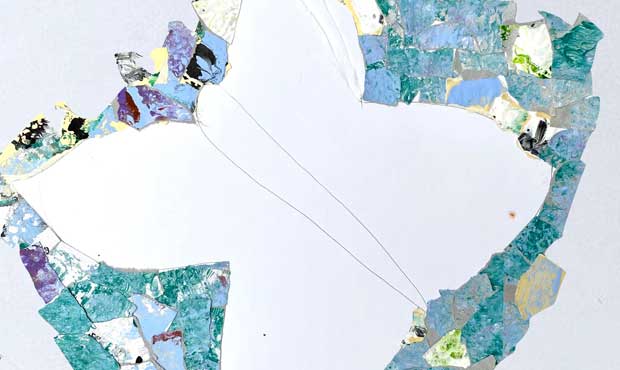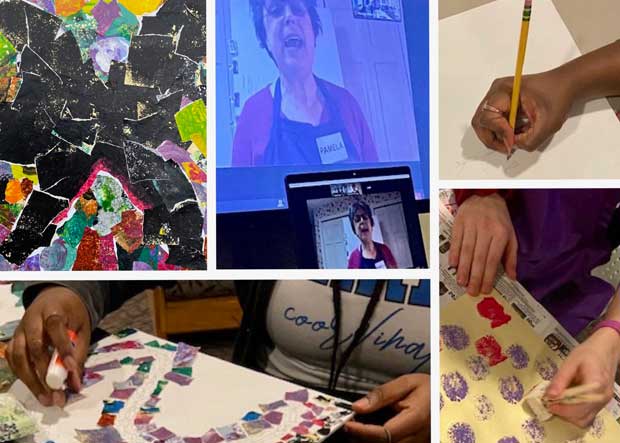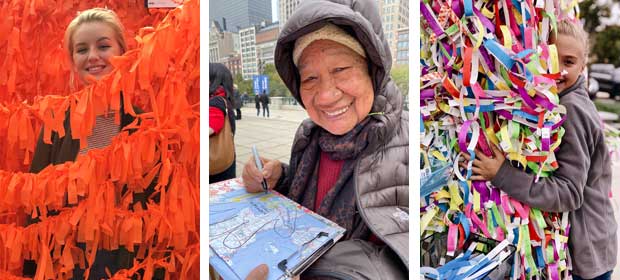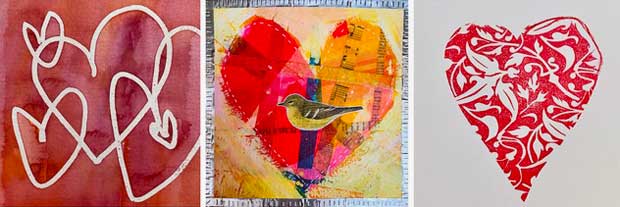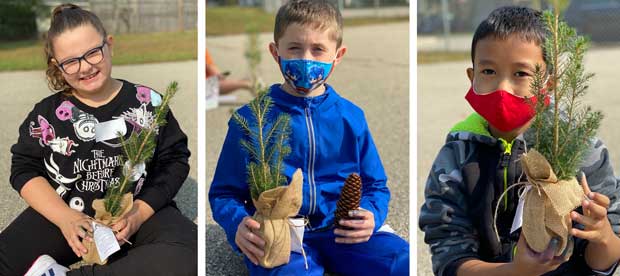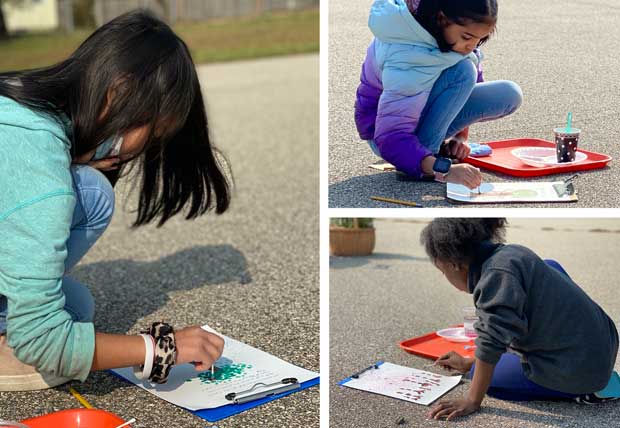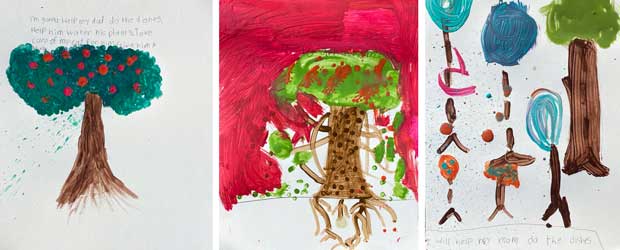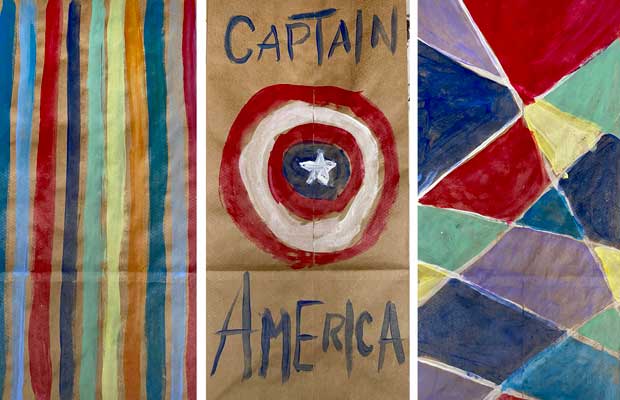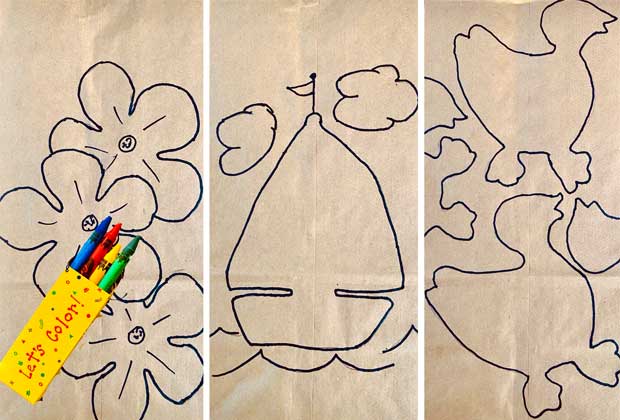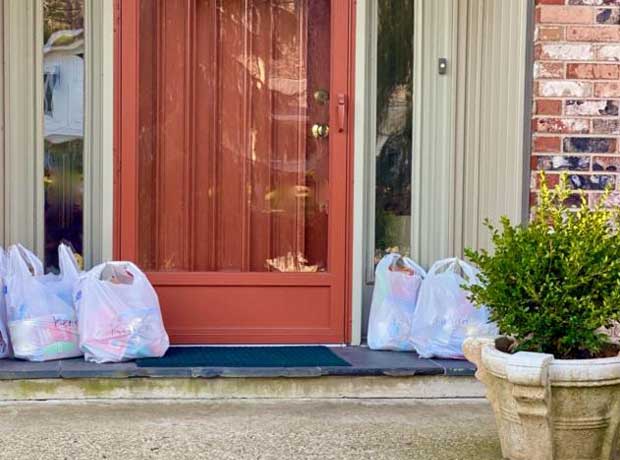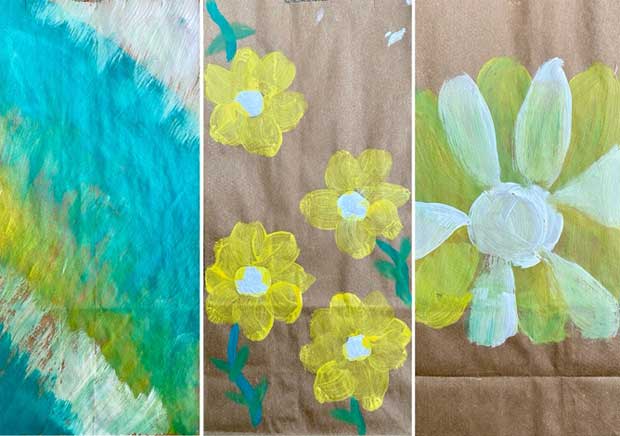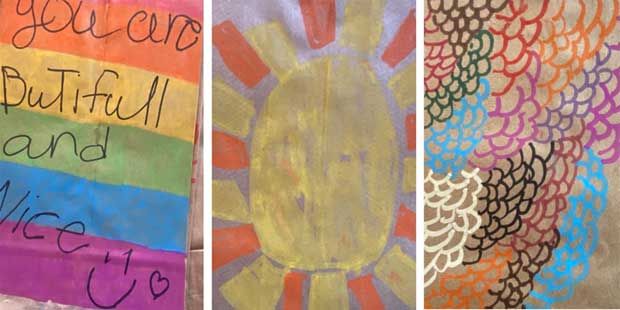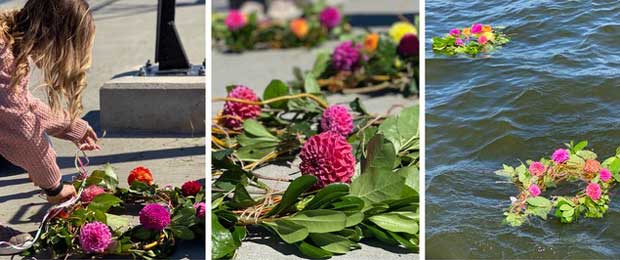
Awakening inspires forgiveness. The healing art provides a tangible way to let go of a past hurt, regardless of whether or not the situation has ever been reconciled. Forgiveness does not mean what happened is OK; it means letting go of your anger or resentment. For this particular art project with the incarcerated teens from Girls Court, participants each wove a ring of flowers with a biodegradable note and released it into the water.
The active gesture of letting go gave their pain a healthy, aesthetic expression, while the ritual of placing a floral wreath in the water symbolized a new beginning—a sort of baptism, or cleansing, of the soul. By extending forgiveness to those who have hurt us, we experienced redemption and growth—awakening our hearts to healing.
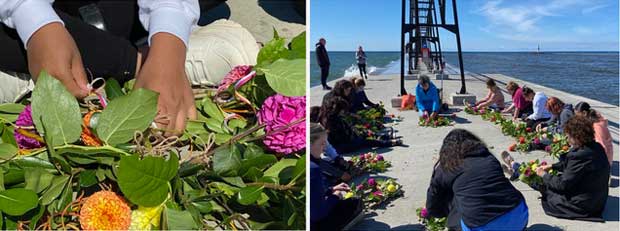
Awakening sprang from my own journey to forgive a hurt from years ago. At age 13, I wanted to belong. Specifically, I wanted to be part of a group of older teens, who were also vacationing with their families at the same location as mine.
My dad’s approach to parenting was pretty hands-off, but during this particular vacation, he firmly said that he didn’t want me to hang out with these older teens, because I was the youngest. But, as a typical adolescent, I didn’t listen to my dad’s advice. I mean, I was either part of this group of kids, or I was on my own.
So, one night, while my parents were out, I invited the teens for a game of monopoly at our place. Later that evening, a couple of the older girls made coffee. I suppose it seemed like a grown-up drink. Although I didn’t like coffee, I drank some too. Again, I wanted to fit in; I wanted them to accept me.
I don’t remember finishing my coffee, though, because I completely blacked out. One of the older girls had slipped something into my coffee, without me knowing it, and I passed out cold.
While I was unconscious, the other kids stripped me of my clothes, carried me to the edge of the beach, and tossed me into the water. The cold water shocked me into a weird place of semi-consciousness—with the horrifying realization that I was naked. After swallowing some water, I felt like I was going to drown, even though I was close to the shore. The other kids laughed as I stumbled toward the beach, fell sideways, and passed out again.
I don’t know what else happened that horrible evening. The next morning, I woke up in my own bed, fully-clothed. Sometime during the night, I had vomited.
I also awakened to the fact that these older teens were not my friends. I was disposable to them—part of a cruel joke played on a child. Not only did my brain still feel foggy, but my heart hurt, too.
Though I made a foolish mistake as a 13-year-old, by not listening to my dad, I was not at fault for being publicly exposed. The guilt and shame belonged to my “friends,” the older teens, who had drugged me, undressed me, and thrown me into the water while they taunted.
Recently, almost 50 years later, I realized that I needed to deal with the painful memory of that dark night. I had never actually told anyone about the incident, because I had taken the older teens’ shame on myself. For my own emotional health, I decided to forgive the other teens, who had transgressed against me, who had used me, even though they never apologized. The forgiveness wasn’t for their sakes; it was for my sake, to help me move forward with my life and experience peace. Although my unfortunate childhood incident happened decades ago, it’s never too late to lay the past to rest.
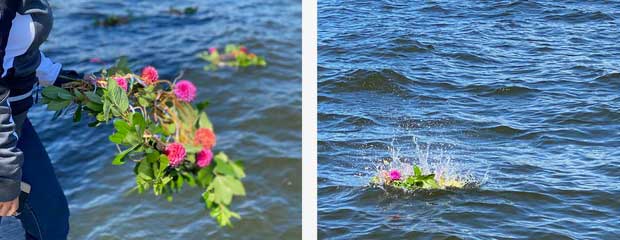
I created Awakening to take proactive steps for my own spiritual healing. The redemptive art provided a tangible way to let go—along with a refusal to accept any shame from circumstances beyond my control. By extending mercy to those who hurt me, I experienced growth and new hope. Amazingly, the tragic childhood incident transformed into a catalyst to help others sort through their painful issues, too. The cleansing act of forgiveness gave me a sense of closure, and a fresh sense of hope awakened as I invited others into this healing project, too.
